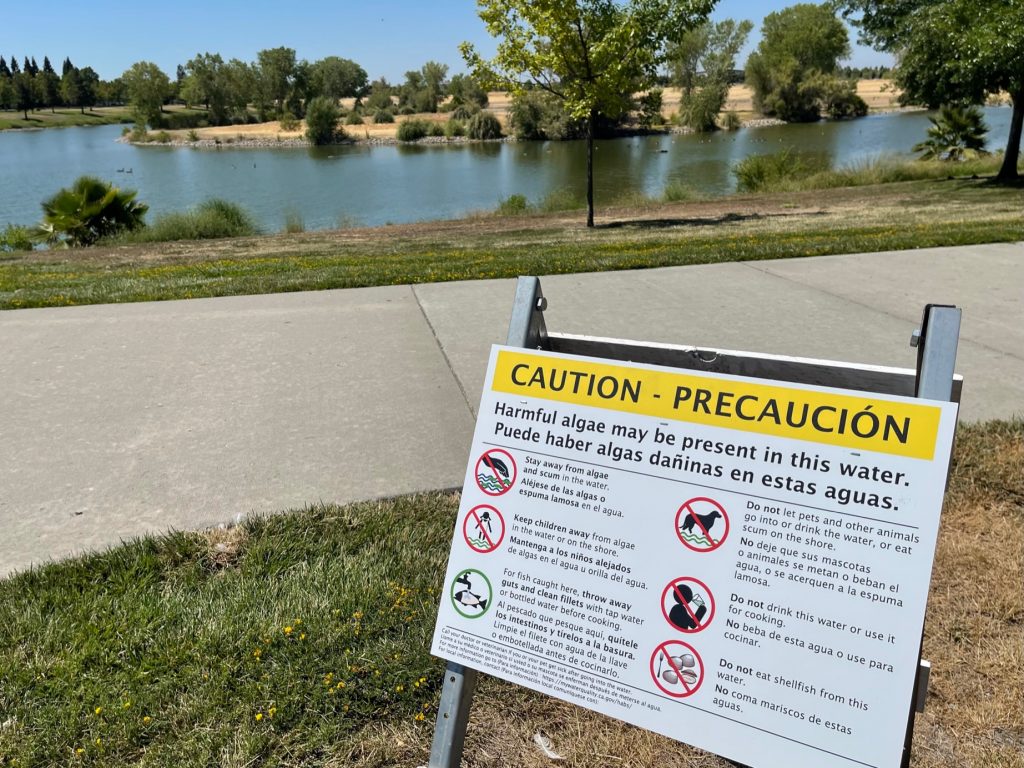
Signs have been posted adjacent to several Natomas basins including the North Natomas Regional Park warning of potential harmful algae in the water. / NatomasBuzz.com Photo
STAFF REPORT
THE NATOMAS BUZZ | @natomasbuzz
Signs popped up today adjacent to several Natomas-area flood control basins warning the public about harmful algae which could be in the water.
City of Sacramento workers posted the signs by River Birch Park next to the Garden Wyndham Hotel, North Natomas Regional Park, Tanzanite Park and North Natomas Community Park.
“The State Water Board has notified us that there is a presence of cyanobacteria at these basins, which are microscopic organisms found naturally in all types of water,” city spokesperson Carlos Eliason said. “We are working with the State Water Board to determine if cyanotoxins are present at these basins.”
According to Mayor Pro Tem Angelique Ashby’s office, a local bird rescue group reported that a sick duck was seen at a city basin in North Natomas to the California Environmental Protection Agency EPA in mid-June.
“There was a concern that the duck became sick after coming into contact with a potentially harmful algae bloom that sometimes grows in basins, lakes or stagnant water during warm temperatures,” said a post on social media.
Representatives from the California State Water Resources Board responded to the report and visually inspected several basins where potentially harmful algae blooms were observed. According to Ashby’s office, results are pending from water quality testing done at one of the basins.
“Based on the presence of the potentially harmful algae blooms, the state recommended we place signs near the basins that caution residents not to allow their children or pets to touch or drink the basin water and to thoroughly rinse any fish caught in the basins,” reads the social media post.
Flood control basins protect waterways and prevent flooding by collecting water runoff from surrounding neighborhoods and removing pollutants before it goes into local waterways, such as the Sacramento River. These basins often contain nutrients from landscaping such as debris, fertilizers and pollutants from urban activities, including litter, brake dust, oil and pesticides.
Low rain levels last winter, hot temperatures, water flows and nutrients or pesticides from neighborhoods can contribute to potentially harmful algae blooms.
More information on harmful algae blooms can be found here.


Speak Your Mind
You must be logged in to post a comment.